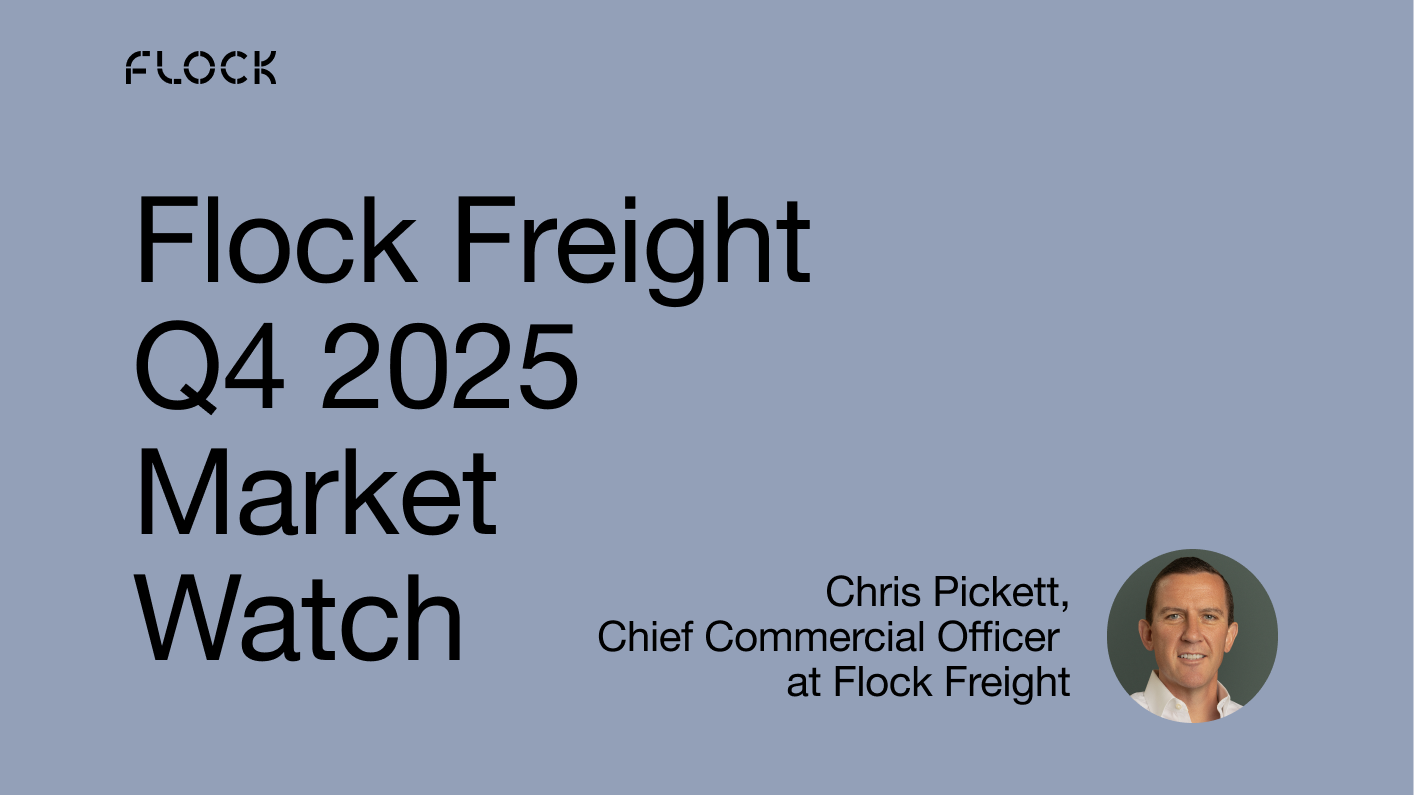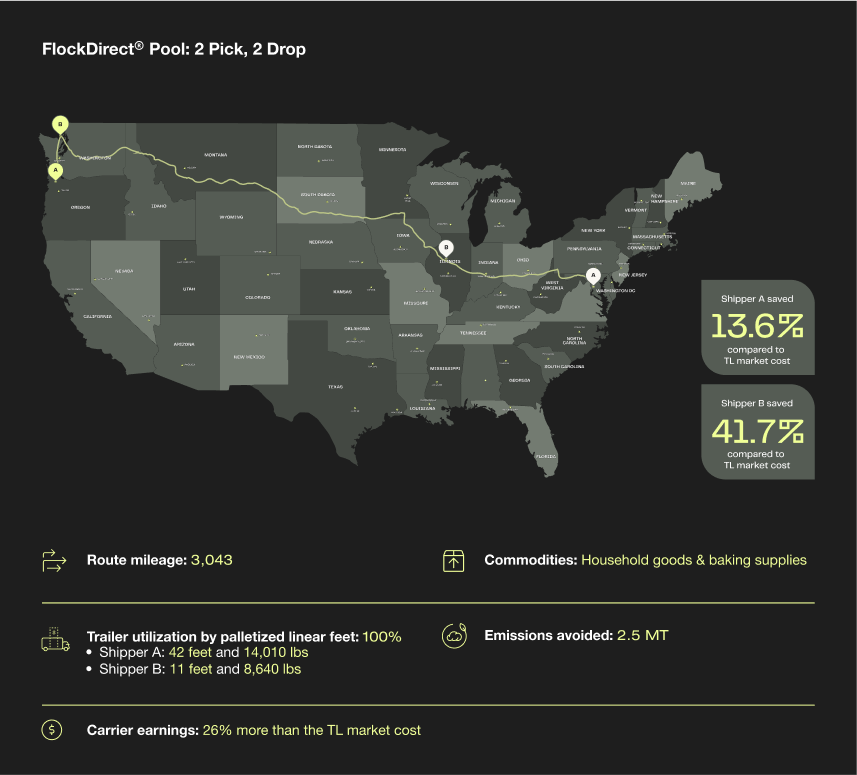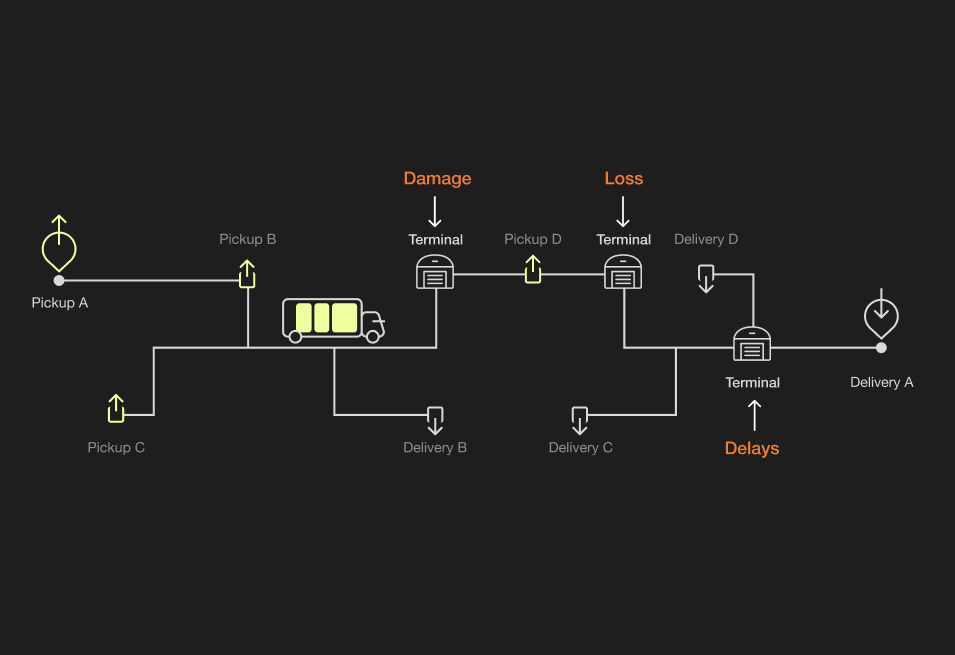Freight Market Trends and Forecasts for Q4 2025

The US freight market remains caught in a deadlock, now for the third consecutive quarter. Supply-side pressures like gradually rising fuel costs and tightening trucking regulations, primarily around driver CDL eligibility, are clashing with demand-side headwinds stemming from trade policy uncertainty and both realized and expected tariff impacts. We're seeing a market that continues to grind along, pending a catalyst to break the stalemate.
A Note from Chris Pickett, Our Chief Commercial Officer
The traditional market cycle is still hampered by unprecedented trade policy uncertainty. Spot rates aren't getting cheaper, but they aren't getting significantly higher either. We are stuck in limbo, mirroring the "sit and wait" strategy adopted by many in the supply chain since the Liberation Day tariff announcements back in April.
This quarter looks and feels a lot like a repeat of the last one. Demand indicators that once looked promising have mostly flattened out, though Q2 GDP was recently revised higher which is mostly attributed to consumer spending and is on a hopeful trend. Regardless, the market is in a fragile equilibrium until something gives. The unstoppable force of the market curve is meeting the immovable object of tariff overhang and its impact both on consumption and industrial activity.
All of the recent compounding supply-side constraints aren’t likely to accelerate the market recovery in the near term, but could have a more dramatic effect on rates when the market does return to a state of relative supply scarcity, with a more acute depletion of power unit and eligible driver supply. This could lead to the market proving to be that much less elastic than during past cycles.
The Freight Market Trends You Need to Watch
Supply Side Pressures
Diesel costs
Fuel costs are slowly creeping up on a Y/Y basis, driving cost inflation for carriers. Rising costs without a corresponding rise in rates means more carriers are losing runway as operating profits get squeezed.
Driver supply & regulation
While industry newsletters are buzzing about crackdowns on immigrant drivers and new English proficiency mandates, these factors have not yet impacted freight market capacity enough to materially influence spot rates, as far as we can tell. However, this remains a potential catalyst to watch, logged under "bullish supply-side rate indicators." This pressure is increasingly contributing to more carrier exits though, mostly in California, which seems to be the state most affected.
Supply-side tariffs are introduced
Class A tractor orders are still negative year over year. The recent announcement of a 25% tariff on foreign heavy duty truck imports probably won’t make a big enough impact to destabilize the current freight market equilibrium. But it will increase the cost of power units overall which makes it less attractive for more capacity to enter the market, ultimately raising the relative barriers to entry and makes for a less elastic marketplace overall.
Demand Side Uncertainty
Tariff overhang
This is the primary factor hampering demand growth. Global supply chains are largely "sitting on their hands," waiting for a resolution on trade policy. In other words, the optimal strategy for many has become to wait, a sentiment now extended by the Supreme Court's involvement, which pushes any potential certainty out further.
Economic slowdown & interest rates
We're seeing more signals of a slowing economy. However, the Federal Reserve has started to lower interest rates, which could stimulate sectors like housing and accelerate economic activity, creating a potential counter-pressure.
Wild cards
Supreme Court tariff ruling
A decision, which could come as late as November, will be a major market-moving event, finally providing certainty and potentially unlocking pent-up freight demand.
Holiday seasonality (peak season)
We still expect a version of a retail peak season. Standard seasonality and ongoing supply exit could lead to a 5-10% year-over-year increase in spot market rates for Q4. However, a surge beyond that is unlikely without a resolution to the tariff uncertainty.
.png)
Key Freight Market Insights for Q2 2025
Forecast
Expect a gradual climb in rates, not a sudden shock. Q4 is predicted to close with spot rates reaching +5% to +10% Y/Y, driven by normal seasonality and continued supply exit.
Conditions for a surge
To go above the +5-10% forecast, the market needs a positive catalyst on the demand side, specifically a resolution to the tariff uncertainty that would restore a more normalized demand environment.
Market state
We are locked in a fragile balance. The market is not in a deep freeze—rates aren't falling—but it's paused. Something has to give eventually.
Shared Truckload Spotlight
Ever wonder what a FlockDirect® Shared Truckload looks like in practice or their real-world impact? Join us on a virtual road trip to see how our recent FlockDirect® shipments are redefining traditional shipping.

Looking Ahead
In this uncertain demand environment, it pays to be agile. Shippers can't afford to get complacent. Shared Truckload (STL) offers a strategic advantage, allowing you to keep inventory moving without committing to full truckloads. The core benefits of STL in this market are threefold:
- Optimize costs: Only pay for the space you use, protecting your budget while rates grind higher.
- Maintain service levels: Move freight terminal-free, avoiding delays and damage that can occur in a strained network.
- Retain flexibility: The freight market is a tale of two opposing forces: supply-side cost inflation versus demand-side policy paralysis.
While hot-button topics like driver regulations are creating noise, they have yet to show a disruptive impact on market rates. The real story is the tariff overhang. The path forward is uncertain, but it pays to be prepared. Shippers should focus on building agile supply chains and strong carrier relationships now. In an environment where the old rules of the market cycle don't seem to apply, efficiency and speed are your greatest assets.
.jpg)




